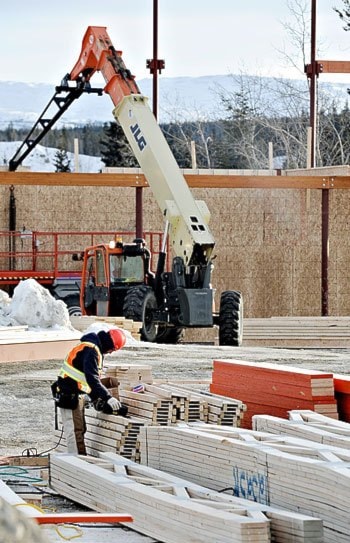The question on the minds of many NorthwesTel customers isn’t whether we’re being price-gouged, but by how much.
Here’s an admittedly rough figure: on average, about $100 per year.
Here’s how we reached that number. While NorthwesTel doesn’t normally release its profits publicly, they did provide the News with unaudited financial highlights for 2012.
It shows the company reaping revenue of $228 million, pre-tax income of $65 million and after-tax profits of $32 million. Those profits would have been higher except for a special one-time payment into the employee pension fund.
With the company holding equity of $200 million, some rough math suggests a return on investment of 16 per cent. By comparison, that’s six points higher than the return requested by power monopoly Yukon Electrical in its recent application.
These “extra” profits work out to $12 million, or over $100 for each person living in the three territories.
Keep this in mind the next time you hear NorthwesTel’s president, Paul Flaherty, explain how if the company’s profits get squeezed, this will necessarily prevent it from investing in its equipment or laying new fibre-optic cable in the territory.
If he were being totally honest, we suspect that Flaherty would concede that the main impediment to him giving customers a bigger break is the expectation that he keep paying fat profits to NorthwesTel’s owner, Bell Canada Enterprises.
There’s still a lot we don’t know, beginning with the company’s profitability for previous years, and whether 2012 is a representative year. The company says that’s the case, but it hasn’t provided any paper to support this assertion.
NorthwesTel could have used all manner of accounting slights-of-hand that could be used to minimize the company’s reported profits. Keeping that in mind, we reckon our estimate of surplus profits is conservative.
And we don’t know what NorthwesTel has done with its surplus profits - although it seems safe to say not much has been invested back in the company. After all, this week’s CRTC hearings were held because regulators concluded that NorthwesTel hadn’t kept up with replacing its antiquated equipment, to the detriment of customers.
Flaherty insists that the CRTC has gotten a lot wrong, and that his company has invested reasonably in its northern infrastructure. But he would say that, wouldn’t he? It’s his job to present his company in the best possible light.
The CRTC’s conclusions, meanwhile, merely match what you’d expect from a company that has long enjoyed a monopoly over many telecommunication services in the North. Monopolies as a rule try to squeeze what cash they can from their captive customer bases.
Flaherty has a point when he notes that NorthwesTel’s operating costs are far higher than usual for his industry. The company serves 40 per cent of Canada’s land mass, and just 0.3 per cent of the country’s population, or 120,000 people. But NorthwesTel receives an annual public subsidy of about $20 million to prop up its money-losing land-line services offered in the North’s remote communities. For a considerable chunk of NorthwesTel’s business, it receives a nearly guaranteed profit.
The threat of competition entering the northern telephone racket has prompted NorthwesTel to trim its staff and improve its services. But one bind that the company now faces is that these changes only reinforce the perception that customers have been bilked in the past.
It’s awfully nice that the company has decided to cut in half the fees it dings its Internet users who exceed their monthly usage allotments, but doesn’t this simply confirm the suspicion that these rates were always exorbitant? (The new rates remain double the norm in southern Canada, although Flaherty notes they don’t compare badly to what’s charged in Alaska.)
Similarly, it’s great to hear that Internet speeds will double or triple in most Yukon communities later this summer, but it’s hard to imagine this speed boost happening, if not for the fact that the company is pleading for public support to help win CRTC approval of its $233-million modernization plan.
Then there’s the key matter of how much NorthwesTel should be allowed to charge other companies to use the only fibre-optic cable connecting the Yukon to the rest of Canada. The CRTC reviewed the company’s cost estimates and deemed them to be wildly exaggerated. Regulators ordered those costs be cut by 70 per cent. Flaherty now pouts that if these cuts are held, it could hold up the laying of additional fibre-optic cable in the territory. While the company asserts that the CRTC has it all wrong, it’s hard to not see this as another case of NorthwesTel attempting to throttle any emerging competition.
As it stands, this situation is akin to having access to the Alaska Highway controlled by one of the big freight-haul companies. Conveniently, the rates charged at the toll booth make it difficult for any competitors to enter the market. If there’s a lesson to be learned from all this, perhaps it’s that we shouldn’t depend on a single company to provide such key infrastructure.
Our late-as-usual territorial government is now talking about commissioning a study into it building a rival fibre-optic line that would connect via Skagway to an undersea cable at Juneau.
It’s a good idea, but it seems far-fetched to imagine this fibre link being built any time soon. In the meantime, most of us will remain dependent on NorthwesTel, just as the company likes it.
